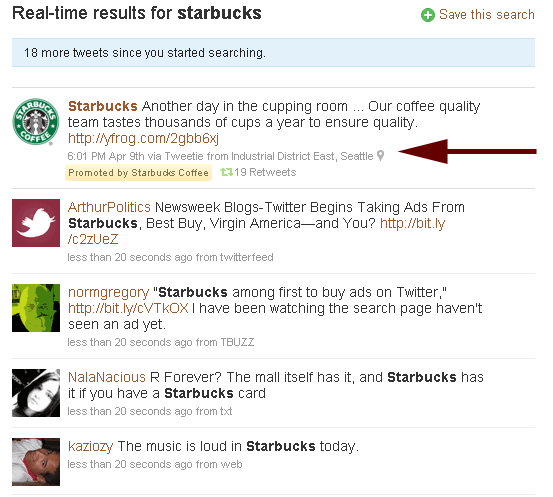
Yesterday, Twitter unveiled its new advertising platform Promoted Tweets. The picture above shows a Promoted Tweet from Starbucks when searching for the keyword “starbucks” on Twitter. I pulled information from The New York Times, Twitter’s blog, and Twitter COO Dick Costolo’s talk at Ad Age, and here are some details that have emerged about Promoted Tweets:
Tag: technology
WordPress Administrative Pages Blank
In this post, I am diverting from my main blog theme to share a technical issue that I encountered with WordPress. Tonight, I opened up WordPress to write a new blog. To my dismay, the administrative pages for WordPress showed up as completely blank pages, even though my actual blog was displayed correctly. After searching the Internet and going through a few trials and errors, I finally found the solution to the problem: the functions.php file in the folder that contains the theme used cannot have blank lines on the top or at the bottom. Deleting those blank spaces brought my administrative pages back. I’m sharing this with my readers in case anyone runs into the same problem in the future. During my research, I also learned that another common reason for such blank pages is the wp-cache plug-in. More information about that issue can be found at http://ibloggedthis.com/2006/05/28/wordpress-caching-wp-cache-plugin-blank-page-bug-fix/.
Simulation in Second Life
A student of mine shared this article on CNN.com with me: “Can second Life Help Teach Doctors to Treat Patients?” It is an interesting illustration of the potential best use of Second Life, at least in the short-term. While the original idea of Second Life was to create a virtual world where individuals can take on the role of an alter ego, the true business appeal of Second Life really lies in its capability to bring computer objects to life. Within the 3D environment, individuals can reenact real-world scenarios in a semi-real setting, a departure from the 2D dominated Internet. Thus, what is most useful about Second Life is not really the hundreds of thousands of users in the network, in contrary to other social networks such as Facebook. Rather, it is the ability to simulate real-world scenarios that may be difficult or expensive to take place in reality. Such applications include product development and demonstration; customer collaboration; teleconferencing; education and other types of simulation; and team work across geographic areas. While businesses have entered Second Life a few years ago to build a “presence” in Second Life for marketing purposes, I envision continued use of Second Life to focus more in these other business areas and applications.